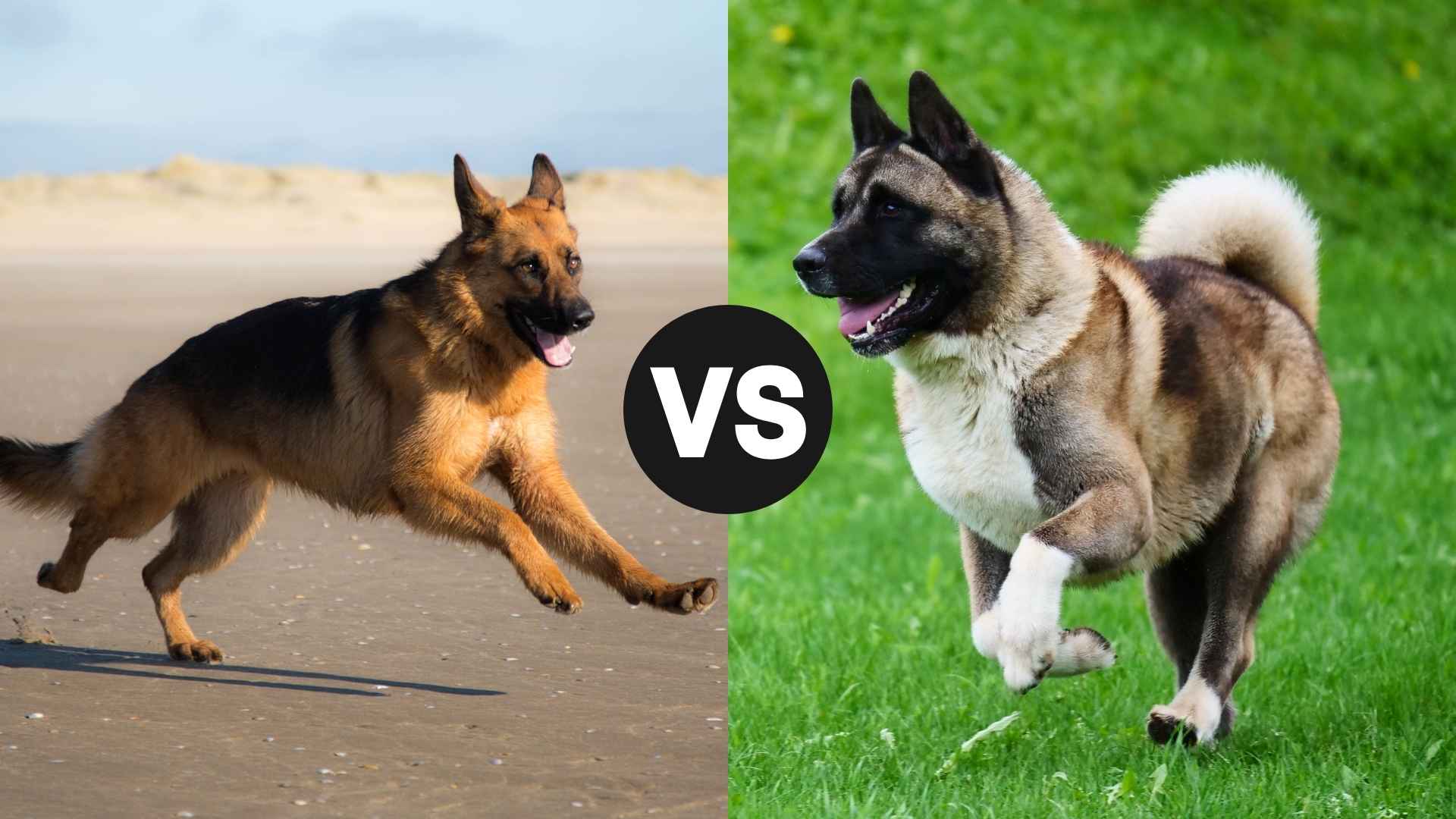Loyalty, strength, and silent courage—if these traits top your dream-dog checklist, then the German Shepherd and the Akita are likely front-runners in your search.
Both breeds command respect and admiration wherever they go, with their noble appearance and protective instincts. But don’t let their similar reputations fool you—these dogs have very different hearts under those thick coats.
The German Shepherd is a world-renowned working dog: eager to please, quick to learn, and always at your side. The Akita, on the other hand, is dignified and independent, a fiercely loyal guardian that bonds deeply—but only with those it trusts. If you’re trying to choose between the two, understanding these subtle but important differences is key.
We’ll walk you through the essentials—from personality and family compatibility to training styles and challenges—so you can make an informed and heartfelt choice. Let’s see which noble canine is right for your home.
German Shepherd vs. Akita
Breeding Origins and Ancestral Background
German Shepherd:
The German Shepherd was bred in—surprise!—Germany, in the late 1800s. Captain Max von Stephanitz, a man with a mission and a magnificent mustache, wanted the perfect herding dog. What he created instead was the Swiss Army knife of the dog world: herder, guard dog, police K9, military companion, movie star (hello, Rin Tin Tin!), and couch cuddler extraordinaire.
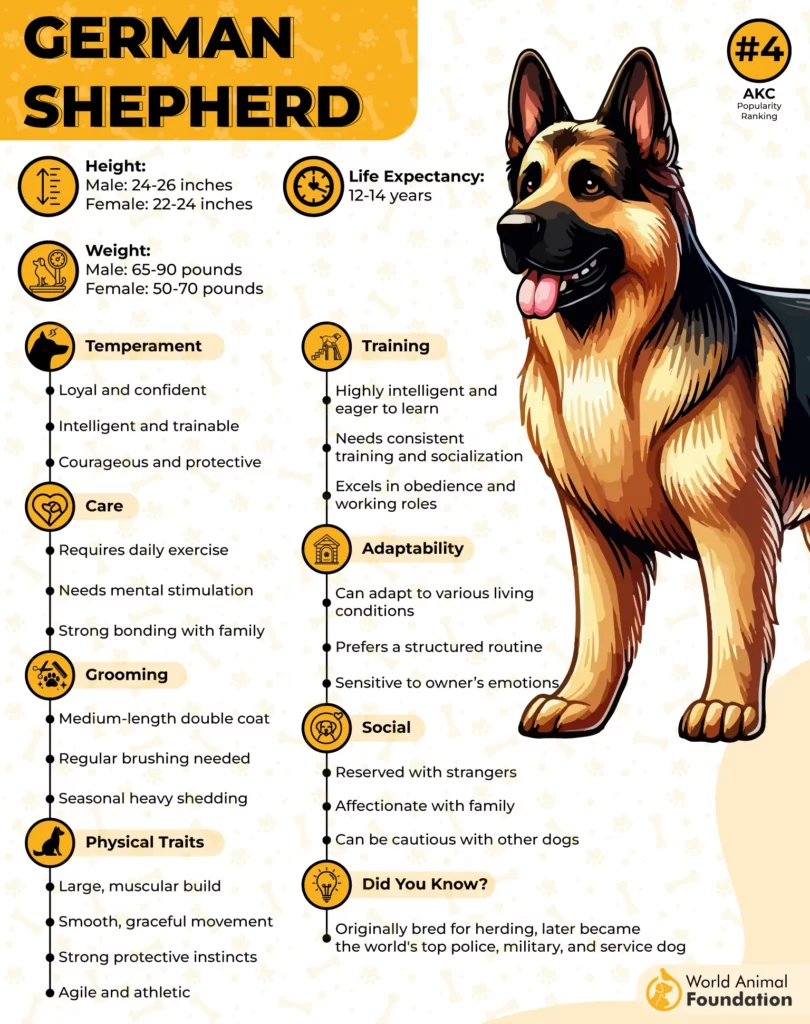
With a bloodline made for obedience, agility, and intelligence, these dogs have working-class roots and an upper-class skillset. Their ancestors were farm dogs, but today’s German Shepherds have traded sheep for shady characters on crime shows.
Akita:
The Akita, beloved by Japanese royalty, hails from the snowy mountains of northern Japan, with a lineage that goes back hundreds of years. Originally bred to hunt boars, bears, and anything else that dared to exist in the Japanese wilderness, the Akita was the four-legged bodyguard of nobles and samurai.
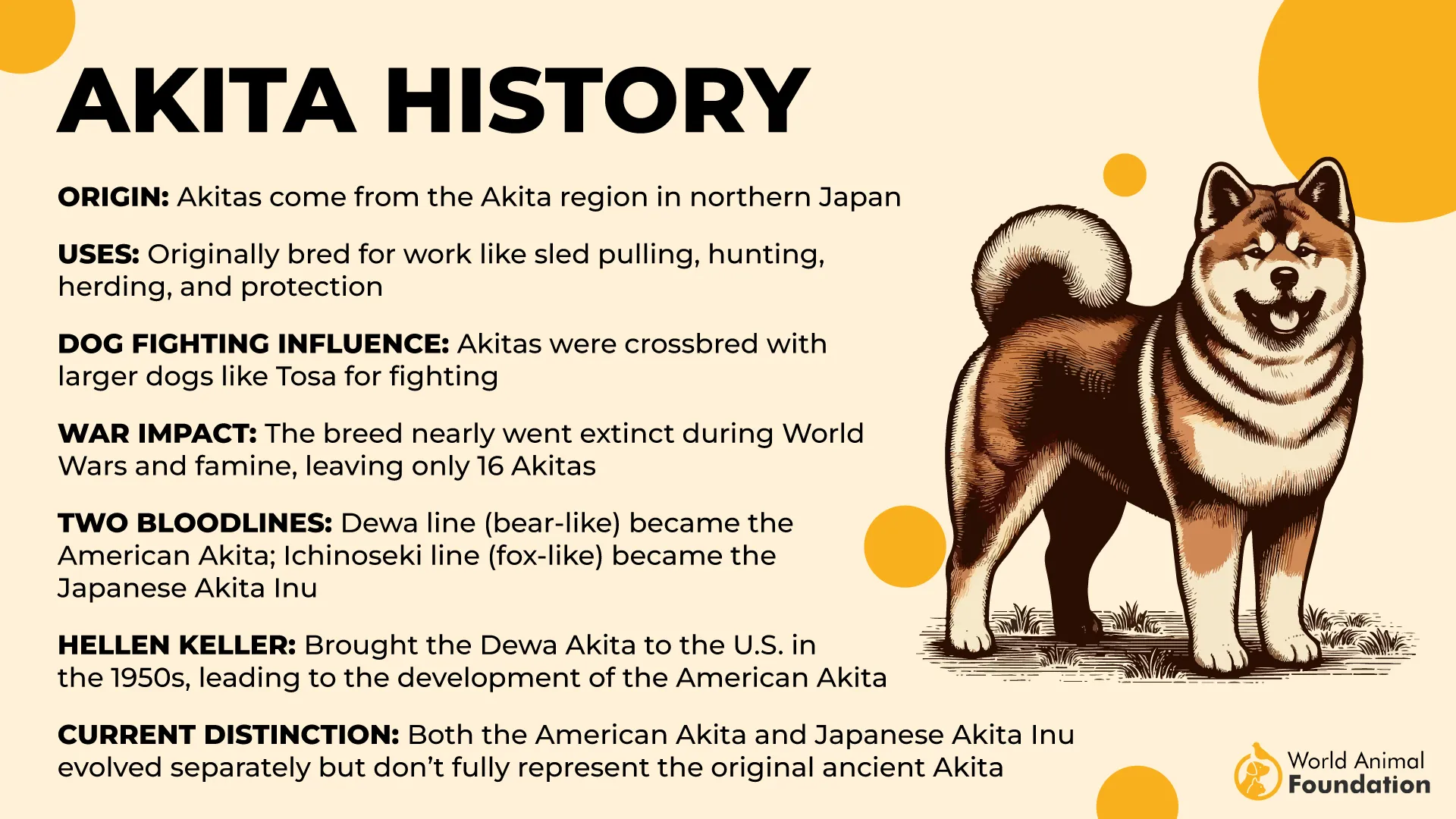
This breed is deeply rooted in loyalty and stoicism. The most famous Akita, Hachiko, waited at a train station every day for 9 years after his owner passed away. Talk about loyalty that makes even your ex feel guilty, says PetMD.
Major Differences Between Akita and German Shepherd
|
Trait |
Akita |
German Shepherd |
|---|---|---|
|
Origin |
Japan – bred for hunting & guarding nobility |
Germany – herding & all-around working dog |
|
Temperament |
Reserved, dignified, protective |
Loyal, alert, affectionate |
|
Trainability |
Independent thinker, can be stubborn |
Highly trainable, eager to please |
|
Sociability |
Not fond of strangers or other dogs |
Can be social with early training |
|
Energy Level |
Moderate – enjoys walks and chill time |
High – needs daily exercise & stimulation |
|
Grooming Needs |
Heavy seasonal shedder |
Constant shedder year-round |
|
Lifespan |
10–14 years |
9–13 years |
|
Health Concerns |
Thyroid, autoimmune issues |
Hip dysplasia, degenerative myelopathy |
|
Best For |
Experienced, calm owners who want a quiet guardian |
Active families or individuals seeking a loyal, trainable partner |
Size and Physical Build Comparison
When it comes to sheer presence, both the German Shepherd and the Akita look like they could star in their own action movie. But when you really break it down, it’s like comparing a professional athlete to a seasoned bodyguard—both are impressive, but for slightly different reasons.
German Shepherds:
Height:
Males: 24–26 inches
Females: 22–24 inches
Weight:
Males: 65–90 lbs
Females: 50–70 lbs
German Shepherd dogs have that lean, muscular, and athletic build, like a personal trainer who moonlights as a detective. Their long legs, deep chest, and slightly sloped back with a straight tail give them a streamlined silhouette, perfect for sprinting, leaping, and looking majestic in slow motion.
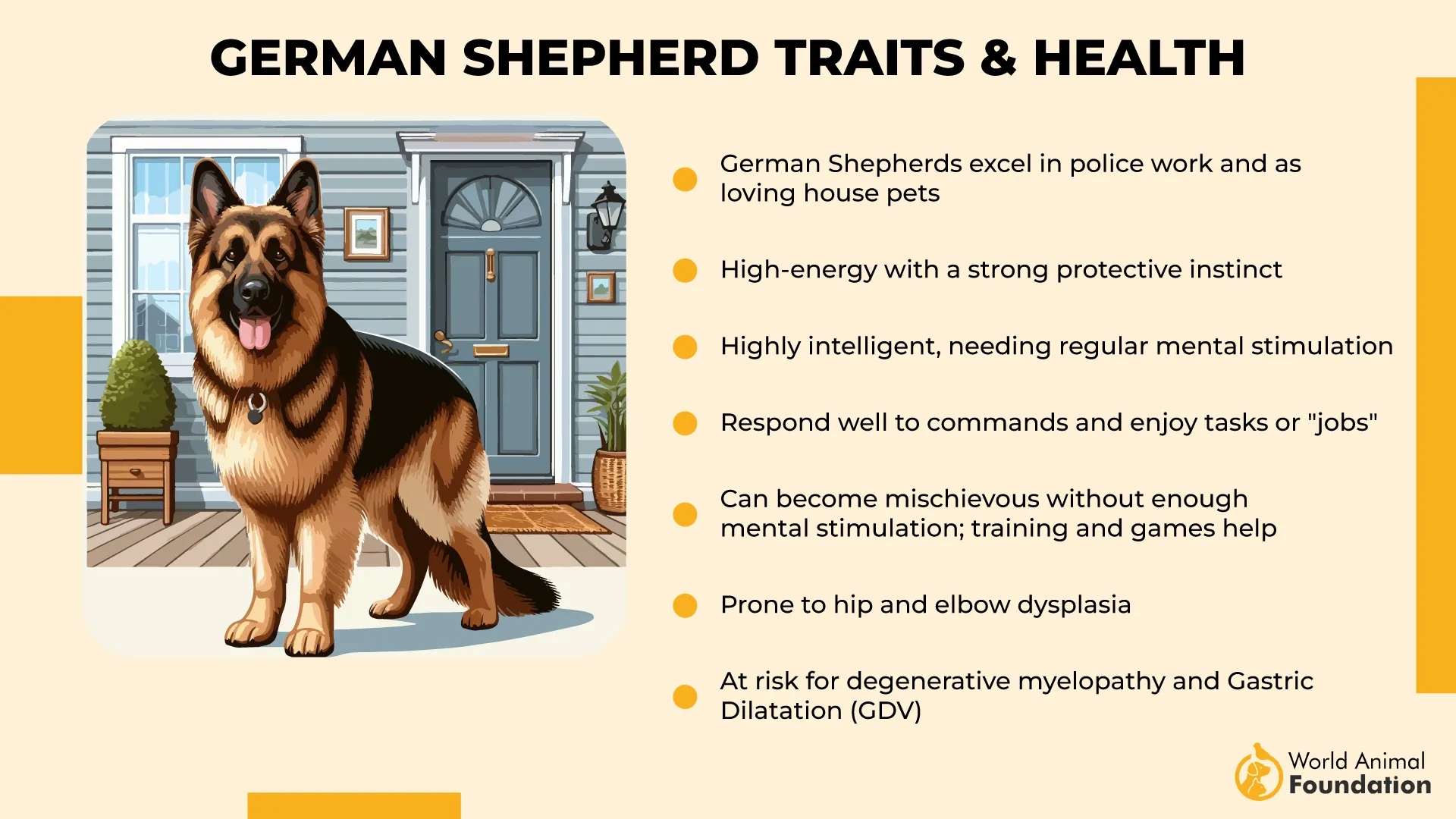
They’re built for police work and movement. Picture them herding sheep, chasing bad guys, or performing acrobatics on an agility course. If this loving dog had a gym routine, it’d be doing HIIT workouts and meal-prepping chicken and rice.
Akita:
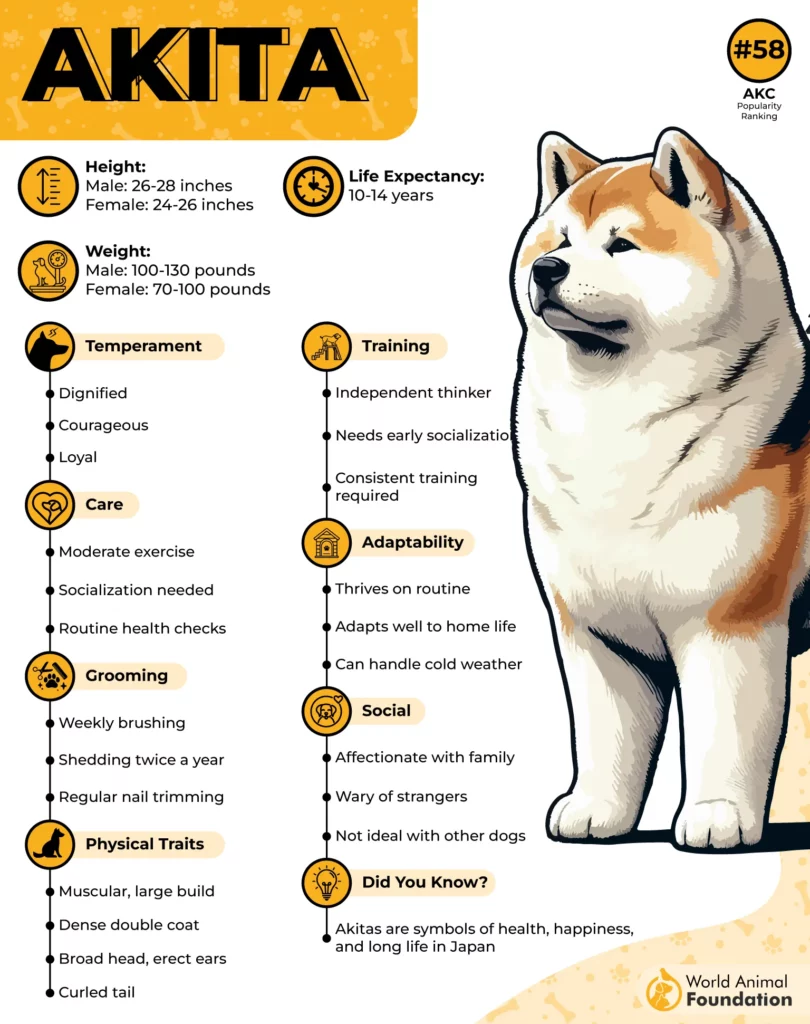
Height:
Males: 26–28 inches
Females: 24–26 inches
Weight:
Males: 100–130 lbs
Females: 70–100 lbs
Now enter the Akita—thicker, heavier, and absolutely regal. This high-energy breed has a bear-like build with a broad head, powerful neck, triangular ears, and dense bone structure. This large dog doesn’t just walk into a room—they own it.
Akitas are like that quiet guy at the bar who could bench press a small car but would rather sip tea and contemplate life. Their double coat makes them look even more massive, and that signature curled tail adds an elegant twist to their powerful frame.
Temperament and Behavioral Traits
Let’s be honest—both beautiful dogs are loyal enough to carry your secrets to the grave, but how they show their love is where things get interesting.
German Shepherds:
German Shepherds are the type of dog that’d bring you coffee in the morning if you trained them right. They’re smart (like, “could pass algebra” smart), obedient, and thrive on having a job to do—even if that job is just following you from room to room like a fuzzy shadow.
Temperament Snapshot:
✅ Incredibly trainable
✅ Friendly (especially when properly socialized)
✅ PetPlan notes German Shepherds aren’t inherently aggressive, but their naturally protective instincts can make them cautious or reserved around unfamiliar people at first.
✅ Great with kids and other dogs (with proper training)
✅ Always in “let’s do something productive!” mode
They’ll look at you with those intense eyes like they’re reading your mind. And let’s be honest—they probably are.
Akita:
Akitas are like the noble samurai of the dog world—calm, collected, and emotionally complex. They’re fiercely loyal to their families but don’t throw affection around like confetti. You earn it. And when you do? It’s like being knighted by royalty.
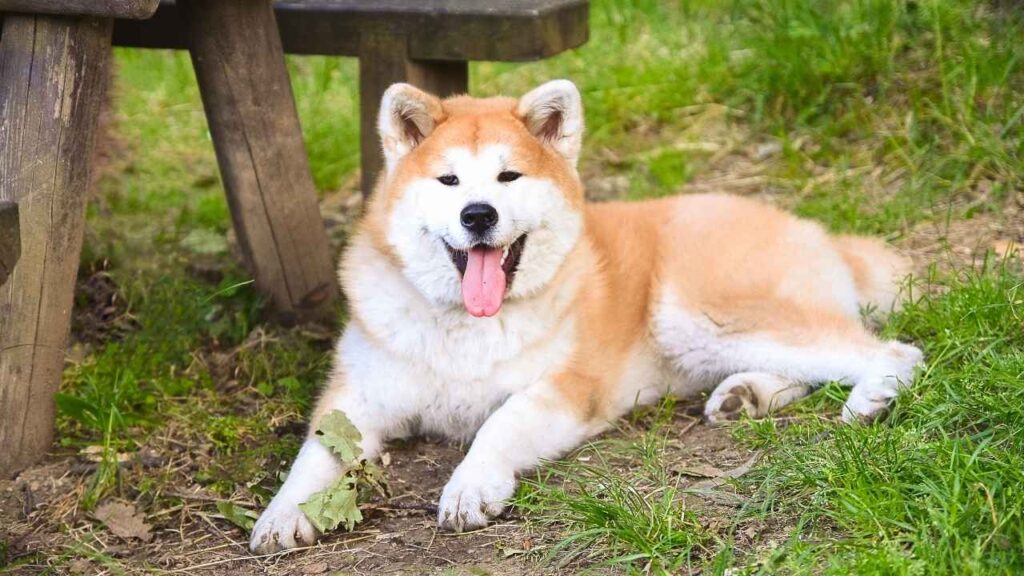
Temperament Snapshot:
✅ Dignified and independent
✅ Very protective of family (especially children)
✅ Aloof with strangers (think: canine introvert)
✅ Can be dog-aggressive—not a dog park enthusiast
✅ Quiet, with a bark that means business
Akitas don’t need your approval. They just need to know you’re safe. And possibly hiding snacks.
Average Lifespan and Health Outlook
Because loving a dog also means worrying about them forever, here’s what you can expect on the health and longevity front.
German Shepherds:
Average Lifespan: 9–13 years
Common Health Issues:
Hip & elbow dysplasia (they suffer for their dramatic posture)
Degenerative myelopathy
Bloat (gastric torsion)
Allergies and skin conditions
Health Tip: Avoid backyard breeders and look for health-screened parents. Also, don’t over-exercise them as puppies—those joints need time to grow!
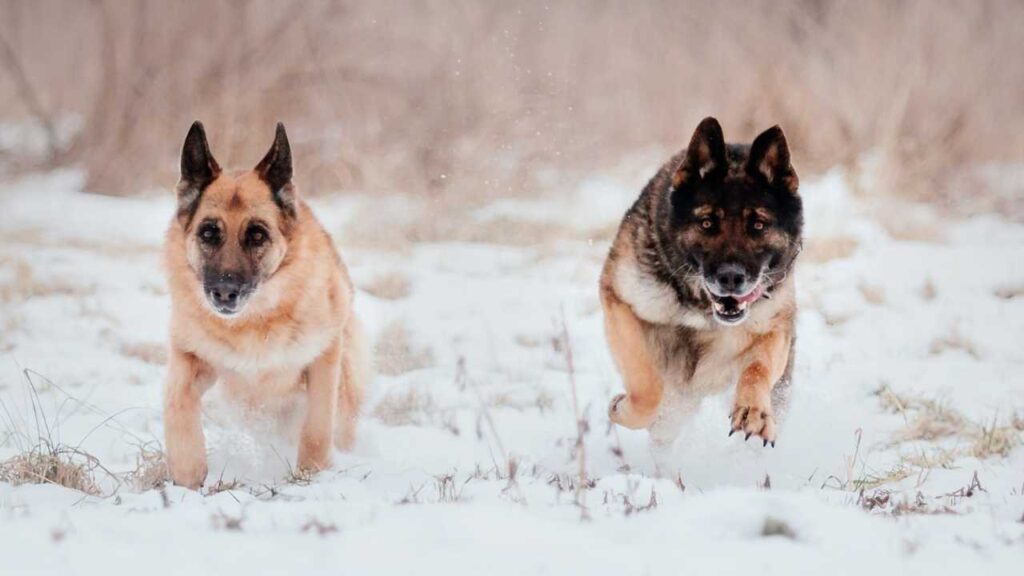
Akita:
Average Lifespan: 10–14 years
Common Health Issues:
Hip dysplasia
Autoimmune disorders
Hypothyroidism
Progressive retinal atrophy (PRA)
Bloat (yup, same scary twisty tummy issue)
Health Tip: Akitas do best with breed-experienced owners and regular vet visits to monitor thyroid levels and skin health. Oh—and they’re not fans of heat. Summer = grumpy polar bear.
Fascinating Facts About Akita and German Shepherd
German Shepherds:
✔ The first canine movie star, Rin Tin Tin, was a German Shepherd rescued from a WWI battlefield. He went on to become a Hollywood sensation with over 20 films. Who needs an agent when you have a snout like that?
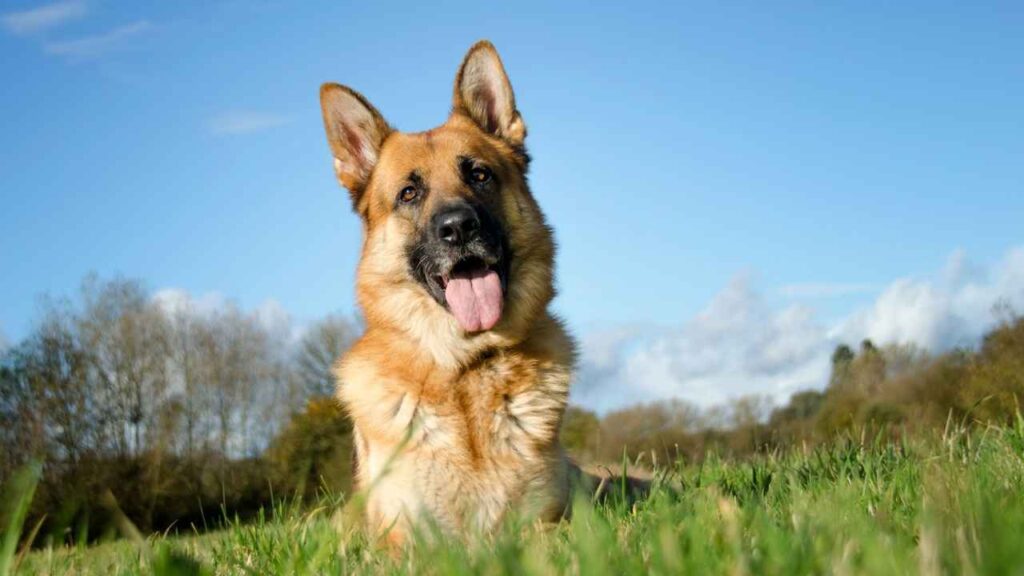
✔ German Shepherds are one of the most intelligent breeds on Earth. That’s why they work in police K9 units, military, search & rescue, therapy, and even acting, as per Wikipedia. If dogs had résumés, theirs would be 5 pages long.
✔ Not all German Shepherds are black-and-tan! They also come in sable, black, white, liver, and even panda. Yes, panda. Because clearly, this breed needed more ways to be cool.
✔ These dogs are nicknamed “Velcro dogs” because they will follow you from the kitchen to the bathroom and back—just to make sure you don’t get ambushed by a rogue roll of toilet paper.
✔ With one ear always up (sometimes both, sometimes just one doing a dramatic flop), a German Shepherd’s radar for strangers is next-level. They don’t just notice sounds—they analyze them like FBI agents in training.
Akita:
✔ In the United States, especially in some regions, the American Akita continues this tradition by helping hunters track large black bears and even grizzlies.
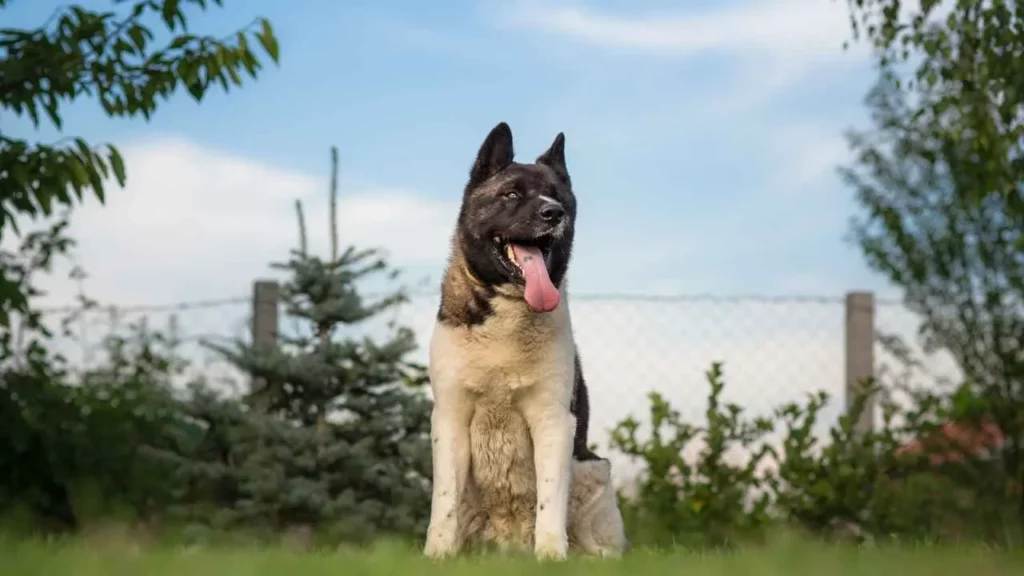
✔ Helen Keller played an important role in bringing Akita Inus to the United States. Through her involvement in breeding efforts, she helped develop the larger, more muscular American Akita we recognize today.
✔ Akitas have a dense double coat that makes them cold-weather royalty. Snow? Ice? Blizzards? Akita says, “Bring it on.” Summer, though… not so much.
✔ The Akita Inu was historically known in Japan as “The Hunter and Protector of the Emperor.” After World War II, American soldiers brought this noble breed to the U.S., introducing it to a whole new world of dog lovers.
✔ While calm and collected, Akitas have a flair for drama when they want something. Ever seen a 100-pound dog give you side-eye? It’s basically a guilt trip in fur.
Conclusion
When comparing the German Shepherd and the Japanese Akita, both stand out as impressive dog breeds with strong loyalty and protective instincts. The German Shepherd is widely recognized as a wonderful dog, known for being obedient, easy to ‘sit’ train, and one of the best breeds for families due to its intelligence and versatility. It’s often considered one of the top good family dogs and is comfortable around other breeds, other animals, and children. The Akita, on the other hand, is a proud and independent breed. While it can also be a good pet, it’s more reserved and sometimes aggressive, especially around other animals. This makes them more suited for experienced dog owners.
In the Akita vs German Shepherd debate, lifestyle and experience matter—Akitas require firm guidance, while German Shepherds thrive with training and affection. Compared to smaller, affectionate breeds like the Shih Tzu or high-drive working dogs like the Belgian Malinois, both the Akita and German Shepherd offer unique strengths. But for most families, the German Shepherd remains the more adaptable and reliable choice.


